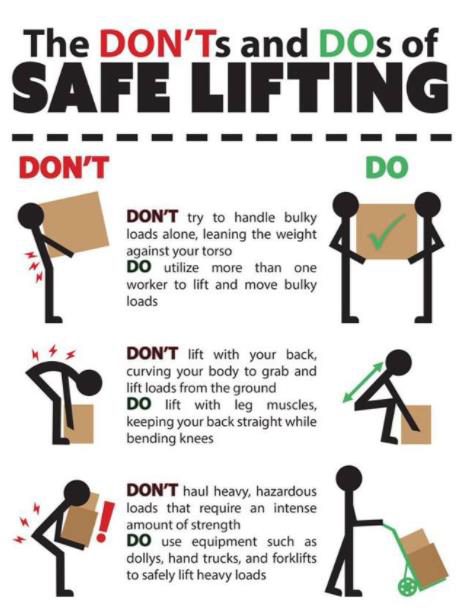
Powerlifting Injury Prevention Guide: A Comprehensive Approach
Powerlifting, encompassing the squat, bench press, and deadlift, demands immense strength and technical proficiency. While rewarding, the sport carries a significant risk of injury if proper precautions aren’t taken. This comprehensive guide delves into effective injury prevention strategies, encompassing training methodologies, equipment considerations, and lifestyle factors. By understanding and implementing these principles, powerlifters can significantly reduce their risk of injury and maximize their training longevity.
I. Understanding the Common Injury Sites in Powerlifting:
Before delving into prevention strategies, understanding the common injury sites is crucial. These areas are frequently stressed during powerlifting movements, making them particularly vulnerable:
- Lower Back: The lumbar spine bears considerable load during squats and deadlifts. Injuries range from minor muscle strains to serious herniated discs.
- Knees: Squats and deadlifts place significant stress on the knee joints, potentially leading to ligament sprains (ACL, MCL, LCL), meniscus tears, and patellar tendinitis.
- Shoulders: The bench press heavily loads the shoulder joint, increasing the risk of rotator cuff tears, shoulder impingement syndrome, and acromioclavicular joint (AC) injuries.
- Elbows: Overuse and improper form during bench pressing can lead to golfer’s elbow (medial epicondylitis) or tennis elbow (lateral epicondylitis).
- Wrists: Wrist injuries, including sprains and fractures, can occur during all three powerlifting movements, particularly if proper wrist support isn’t used.
- Hamstrings: These muscles are vital for hip extension and are frequently strained during deadlifts and squats if not adequately prepared.
- Quadriceps: Similar to hamstrings, quadriceps strains can occur due to insufficient warm-up or excessive load during squats.
II. Training Strategies for Injury Prevention:
Effective training programs are the cornerstone of injury prevention. The following strategies are paramount:
- Progressive Overload: Gradually increasing the weight, reps, or sets over time is essential for strength gains. However, rapid increases in load significantly increase injury risk. Implement gradual progressions to allow your body to adapt.
- Proper Warm-up: A thorough warm-up is non-negotiable. This should include general warm-up activities like light cardio and dynamic stretching, followed by specific warm-up sets with progressively increasing weight. This prepares muscles and joints for the heavy lifting to come.
- Correct Form: Mastering proper lifting technique is crucial. Poor form places undue stress on joints and muscles, significantly increasing injury risk. Work with a qualified coach to ensure proper form, and film your lifts to identify and correct any technical flaws.
- Adequate Recovery: Rest and recovery are as important as training. Muscles need time to repair and rebuild after intense workouts. Ensure adequate sleep, nutrition, and rest days to prevent overtraining and injury.
- Periodization: Structuring training into distinct phases (e.g., hypertrophy, strength, peaking) allows for planned rest and prevents burnout. This prevents excessive stress on the body.
- Accessory Exercises: Incorporate accessory exercises to strengthen supporting muscles and improve joint stability. For example, strengthen rotator cuff muscles to protect the shoulder during bench press, or core muscles to support the spine during squats and deadlifts.
- Listen to Your Body: Pay attention to any pain or discomfort. Ignoring pain can lead to more serious injuries. Rest or modify your training if needed.
- Variety in Training: Avoid repetitive movements consistently. Vary your exercises and training methods to prevent overuse injuries. Consider including variations of the main lifts to engage different muscle fibers.
- De-load Weeks: Periodically incorporate de-load weeks into your training program to allow for full recovery and reduce the risk of overuse injuries. This involves reducing training volume and intensity for a week or two.
III. Equipment Considerations:
Proper equipment plays a vital role in injury prevention:
- Proper Footwear: Wear supportive footwear with good ankle stability, especially during squats and deadlifts.
- Weightlifting Belt: A weightlifting belt can provide support to the lower back, particularly during heavy squats and deadlifts. However, it shouldn’t be relied upon as a substitute for proper form.
- Wrist Wraps: Wrist wraps can provide additional support and stability during bench pressing and other movements.
- Knee Sleeves: Knee sleeves offer compression and warmth, potentially improving joint stability and reducing the risk of knee injuries.
- Spotters: Always use spotters, especially when lifting heavy weights. Spotters can assist if you fail a repetition, preventing injuries from dropped weights.
- Properly Maintained Equipment: Ensure that all equipment, including barbells, plates, and machines, is in good working order. Damaged or worn equipment can increase the risk of accidents.
IV. Lifestyle Factors for Injury Prevention:
Beyond training and equipment, lifestyle choices play a crucial role:
- Nutrition: Maintain a balanced diet rich in protein, carbohydrates, and healthy fats to support muscle growth and recovery.
- Hydration: Adequate hydration is essential for muscle function and overall health.
- Sleep: Aim for 7-9 hours of quality sleep per night for optimal muscle recovery and hormone regulation.
- Stress Management: Chronic stress can negatively impact recovery and increase the risk of injury. Practice stress-reduction techniques like meditation or yoga.
- Flexibility and Mobility: Regular stretching and mobility work improve joint range of motion and reduce muscle stiffness, minimizing injury risk.
V. Seeking Professional Guidance:
Seeking professional guidance is crucial for maximizing safety and performance in powerlifting. Consider these options:
- Certified Strength and Conditioning Specialist (CSCS): A CSCS can design individualized training programs tailored to your specific needs and goals, ensuring proper form and progressive overload.
- Physical Therapist: A physical therapist can assess your movement patterns, identify weaknesses, and recommend exercises to improve joint stability and mobility.
- Registered Dietitian: A registered dietitian can provide personalized nutritional guidance to support your training and recovery.
VI. Conclusion:
Powerlifting offers tremendous physical and mental rewards, but it’s crucial to prioritize injury prevention. By implementing the strategies outlined in this guide—from meticulous training planning and proper form to appropriate equipment usage and healthy lifestyle choices—powerlifters can significantly reduce their risk of injury and enjoy a long and successful powerlifting journey. Remember that consistency and attention to detail are key to staying healthy and strong. Don’t hesitate to seek professional guidance from qualified professionals to personalize your approach and maximize your safety and performance.



